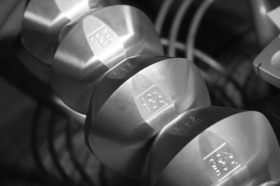CJEU’s recent preliminary ruling in Gömböc Case C-237/19 highlights assessment criteria regarding the registrability of shapes of goods as trademarks. The shape of the Gömböc was refused trademark protection in Hungary because the sign allegedly consisted ‘exclusively of the shape of goods which is necessary to obtain a technical result’ (in respect of toys) and ‘which gives substantial value to the goods’ (in respect of decorative items). Upon referral for a preliminary ruling by the Kúria (Supreme Court in Hungary), the CJEU underlines what factors may and should be relevant when addressing these grounds for refusal.

Recap
We introduced the Gömböc to the esteemed public of the Kluwer Trademark Blog in our earlier blogpost, where we also summed up the calamities of the respective Hungarian 3D trademark application, and the issues referred to the CJEU by the Kúria (Supreme Court in Hungary).
CJEU’s answers
In essence, the first question was whether the assessment must be limited to the graphic representation of the sign, or whether other information, such as the perception of the relevant public, should also be taken into account when determining whether a sign consists exclusively of the shape of goods which is necessary to obtain a technical result. In this respect, the CJEU referred to its prior decisions underlining that the competent authorities are to identify the essential characteristics of the shape first, then examine whether those essential characteristics perform a technical function. Not so surprisingly after CJEU’s recent case-law, the court held that the assessment is not limited to the graphical representation of the sign, so the perception of the relevant public may be taken into account to identify the essential characteristics of the sign. However, when it comes to examining whether the said characteristics perform the technical function, the assessment must be based on information originating from objective and reliable sources, while the perception of the public plays no role.
The second question was whether the ground for refusal based on the shape’s giving substantial value to the product is applicable if it is only the perception or knowledge of the relevant public that the competent authority relies on when concluding that the shape gives substantial value to the product. In this respect, the CJEU held that it must be apparent from objective and reliable evidence that a consumer’s decision to purchase the goods in question is, to a very great extent, determined by one or more features of the shape. In this respect, characteristics of the product that are not connected to its shape are irrelevant (e.g. technical qualities or the reputation of the product). The perception and knowledge of the relevant public may be considered when determining the essential characteristics of the product, so not only the aesthetic merits are relevant. However, consumers’ decision to purchase the product must be, to a large extent, determined by the identified characteristic of the shape and, as the CJEU held when answering the third question, other considerations such as the story of the products’ creation, method of production, materials used or the identity of the designer are not related to the shape.
The third question was whether the ground for refusal based on the shape’s giving substantial value to the product automatically applies when the shape is protected by other intellectual property rights or it is the shape of a decorative item. The CJEU held that even though the underlying public interest of the functionality provisions is to prevent the perpetuation of time-limited intellectual property rights by means of trademark protection, this objective does not prevent the coexistence of several forms of legal protection. Moreover, ‘substantial value’ may apply to decorative items but does not do so automatically. According to the CJEU, decorative items may be given substantial value by factors other than the shape such as the story of the products’ creation, method of production, materials used or the identity of the designer. Therefore, the competent authorities should not refuse to register a product shape as a trademark merely because the same shape is protected by design rights or because the product is a decorative item.

Conclusions
It is now up to the Kúria to revisit the Gömböc case in Hungary. That said, certain universally applicable conclusions may be drawn. It is now well settled that the competent authorities are not limited to the graphical representation of the shape when assessing whether it is ‘necessary to obtain a technical result’ or ‘gives substantial value to the product’. However, there is an important rule when considering factors beyond the graphical representation: while the essential characteristics of the shape can be identified through the eye of the relevant public and non-visual factors may also be considered, authorities must rely on solid evidence when determining the relation between the identified characteristics of the shape and the product itself, i.e. assessing whether the essential characteristics of the shape perform a technical function or determine to a very great extent the consumers’ decision to purchase the product.
[The author represents the applicant before the authorities.]
[Pictures from www.gomboc.eu]
_____________________________
To make sure you do not miss out on regular updates from the Kluwer Trademark Blog, please subscribe here.



In any case, this is the best title of a post in a very long time.